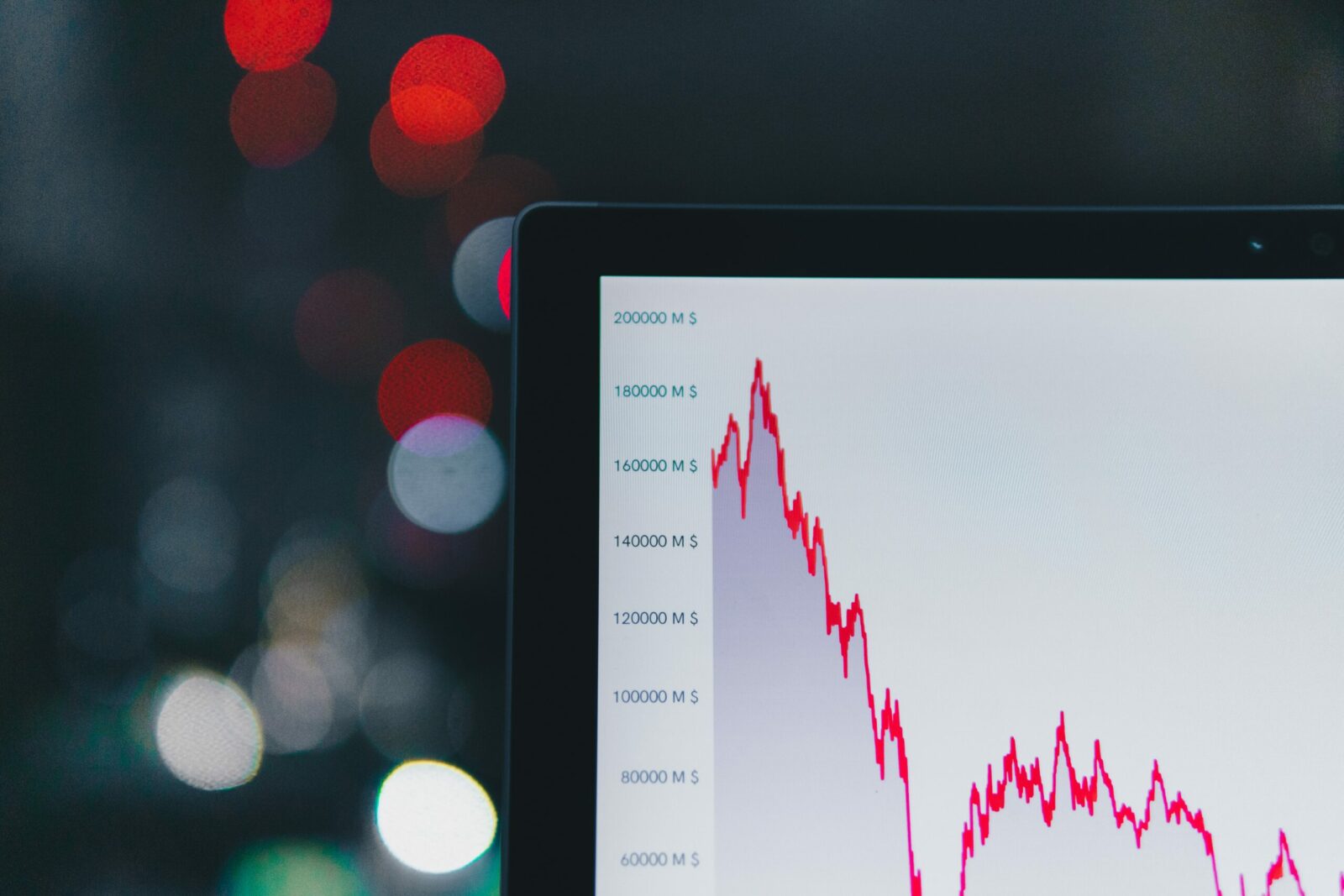Join 34,000+ Traders & Investors by getting our FREE weekly Sunday Cheat Sheet email. Get key market news and events before everyone else. Click Here to See if you Qualify.
The term economy encompasses all activities related to a country’s production, distribution, trade, and consumption of goods and services. It includes government, businesses, consumers, and investors.
Every economy differs depending on its resources, culture, laws, history, and geography. For instance, the Canadian economy is resource-rich, and its geographic location makes it the largest exporter of oil and gas to the United States. Therefore, the energy, banking, and mining sectors significantly contribute to the economy.
Individual stock prices are directly influenced by company fundamentals and sectoral trends and indirectly by macroeconomic indicators. Here are 10 macroeconomic indicators investors should know to understand upcoming opportunities and risks.
We will start with indicators that tell us about the participants in the economy.
Investor: The Stock Market
Risk Looking Foolish: 10 Essential Macro Indicators Ignored by Unsuccessful Investors
- Investor: The Stock Market
- Investor: The Bond Market
- Business: Production and Manufacturing Index
- Business: Labour Market Statistics
- Consumer: Retail Sales
- Consumer Confidence Index
- Inflation rates
- Government: Interest Rates
- Commodity prices
- GDP
- Profitable Stock Traders are Using This Tool to “Hack” the Markets
- 8 Cryptos Set to Shoot to the Moon in 2023 – One Small Investment, One Giant Leap for Your Wallet
- 10 Stocks in Bill Gates Stock Portfolio Smart Investors are Buying
- Top 28 Best Stock Market And Investing YouTube Channels Right Now
- Top 6 Personality Traits Of Highly Successful Investors And Traders

The stock market helps predict the financial health of companies as market participants spend time analyzing company fundamentals and assigning a value to the stock. The TSX Composite Index tells you the combined performance of the top 250 companies by market cap, representing around 70% of the total market cap. However, the index is influenced by speculation and investor sentiment, which deviates stock prices from the true value of companies, creating bubbles and market crashes.
For instance, the 2020–2021 tech bubble did not reflect the actual state of the economy. The stock market continued to surge in a weak economy. When such a deviation occurs, it creates an opportunity to sell overvalued stocks and buy undervalued stocks, as the market will normalize to reflect the economy in the long term.
To understand this opportunity, look at the stock market’s performance along with other economic indicators like GDP, inflation, production, and retail sales statistics. If these numbers are rising and the stock market is falling, the market has undervalued stocks.
Investor: The Bond Market

The bond market helps predict investor expectations of the future of the economy. The bond yield curve shows the price investors are willing to pay for bonds with equal credit quality but different maturities. It generally moves upward as the yield is higher for longer maturities, hinting that investors are optimistic for the long term. If the yield curve inverts, meaning a higher yield for short maturities, it hints investors are uncertain about the long term. It is also an indicator of a looming recession.
The central bank’s interest rate influences short-term yields (up to two years). Short-term bond yield rises along with the interest rate, and consumers can earn a higher interest. But higher rates are not sustainable, as rising interest expenses increase the risk of default. In 2008, most US mortgages defaulted as the Fed interest rate peaked at 5.25%.
Long-term yield (over two years) is influenced by inflation and economic growth. For instance, the 2022 tech stock sell-off came as hedge funds sold their stocks to buy bonds on learning that central banks would hike interest rates. They wanted to benefit from higher short-term bond yields.
Business: Production and Manufacturing Index

While investor-related indicators may not always show the economy’s health, production numbers do. Higher production number shows that businesses are receiving orders and expect demand to grow. It means businesses will increase manufacturing capacity, leading to higher demand for raw materials, a surge in employment, and improving GDP and company fundamentals.
But increased production may only sometimes mean higher sales. Hence, look at production numbers alongside inventory levels and retail sales to see if it is long-term growth or just filling a temporary supply gap.
For instance, car production soared in 2021 post-pandemic due to pent-up demand. But car sales remained subdued as semiconductor supply shortages increased inventory levels, restraining automakers from fulfilling consumer demand. Automotive stocks surged in the first half of 2021 and fell afterward.
Business: Labour Market Statistics

The production numbers complement labour statistics as companies invest in business expansion and growth. Lower unemployment increases the purchasing power of consumers, thereby boosting demand. Lower unemployment shows that both businesses and consumers are optimistic about future growth.
But when unemployment figures rise, the overall economy faces the after-effects. Businesses cut jobs when they don’t see the situation improving. Increasing unemployment reduces purchasing power and impacts demand, and reduces GDP.
Unemployment figures may only sometimes be in tandem with other economic indicators, as weakness in one sector might be offset by strength in another. For instance, airlines cut jobs during the pandemic while tech companies hired more people. Employment figures remain low even as the economy weakens, as many people leave the workforce to retire early.
Consumer: Retail Sales

Retail sales form the most considerable portion of an economy as they show the sale of all finished goods and services to consumers and businesses.
High retail sales indicate consumers are optimistic about the future and are willing to spend on discretionary items. Higher demand drives the GDP. For instance, on a scale of 1–100, retail sales fell below 50 in March–May 2020 and surged past 60 since 2022 (led by higher car sales) as the economy reopened without pandemic restrictions.
Despite rising sales, auto stocks didn’t recover to their pre-pandemic level, as retail sales alone may not show the true consumption picture. People support consumption with loans. Higher retail sales boost GDP, but higher debt levels signal an impending recession.
Consumer Confidence Index

Another participant in the economy is consumers. Their confidence influences other macro indicators. The Conference Board of Canada surveys Canadian households on household finances, business conditions, unemployment, inflation, income, government economic policy, and whether they would buy or sell a high-value item like a house or automobile.
An optimistic consumer will continue to buy, while a pessimistic consumer will reduce spending. Consumer confidence alone does not give you the true economic picture, as government policies can significantly alter the scenario.
Inflation rates

The inflation rate tells you the increase in the price you pay for goods and services. Price is determined by demand and supply; it rises when demand outstrips supply and falls when supply outstrips demand. A steady increase in inflation hints at economic growth.
But a higher inflation rate hurts consumers’ purchasing power and depletes their savings. The currency starts losing its value, which impacts international trade.
Inflation increases when there is too much money in the economy. High inflation is unsustainable, as there comes a point where consumers reduce their spending and take on more loans to meet basic needs. Even businesses feel the impact as expenditure increases and profit margins reduce. Businesses cannot continue to make losses. Hence, they start cutting costs, reducing employment, and slowing GDP.
While high inflation is bad for several consumer businesses, it is good for commodities like gold. People turn to gold as a safe haven when a currency loses value.
Government: Interest Rates

Inflation numbers trigger the government’s monetary policy decision related to interest rates. In a low-inflation environment, the government reduces interest rates to increase the money supply in the economy and boost consumption. The government increases interest rates in a high-inflation environment to reduce the money supply.
A higher interest rate increases borrowing costs, discouraging people from taking loans. Those with high debt need help to keep up with rising interest costs and reduce spending. Higher interest expense also increases the risk of default. Some companies and banks shut down operations because they don’t have enough cash to pay their debt obligations.
In 2006, the Fed increased the interest rate to 5.25%, which dried up liquidity. Several consumers and businesses defaulted on loans, leading to bank failures.
Interest rates also have a direct impact on the stock price. When interest rates rise, investors prefer lower-risk fixed-income securities over high-risk stocks. When interest rates fall, investors are discouraged from keeping their money in banks and instead invest in stocks. You can take a contrarian approach and buy growth stocks in a rising interest rate environment.
Commodity prices

The domestic and international markets impact an economy. Every economy depends on its resources and geography. Commodities like oil, iron, and steel form the backbone of a growing economy as they are used to build infrastructure. But geopolitical tensions and the demand-supply gap can impact prices.
Canada is an oil- and gas-rich country and houses several mining companies. Commodity prices significantly impact Canadian stocks and the economy.
GDP

All macro indicators contribute to the gross domestic product. The GDP is the monetary value of all goods and services produced in a country. Other indicators can give you sector-specific inputs, but the GDP of an economy can tell you the economy’s overall growth potential.
The GDP growth rate slows when other indicators like manufacturing, sales, and employment fall. Higher interest rate also negatively impacts GDP, which in turn impacts stocks. But, government intervention in the economy through stimulus packages and excessive government spending stabilizes GDP.
In a growing economy, most sectors tend to move upward, with banks, retail, consumer discretionary, and real estate outperforming defence stocks like utilities, agriculture, and gold. In a slowing economy, defence stocks like food and utilities outperform growth stocks. A good strategy could be to buy defence stocks or ETFs in a growing economy and growth stocks and ETFs in a slowing economy.
Macroeconomic indicators are a way to analyze stocks using a top-down approach. These indicators can tell you about the overall economy and the sectors that may outperform and underperform. You can buy or sell sector ETFs to benefit from the broader trend.
Learning about macroeconomic indicators can help investors and traders play their cyclical bets efficiently, as there are specific dates when these indicators are released.
Profitable Stock Traders are Using This Tool to “Hack” the Markets

This tool is helping traders beat the market compared to those who have no idea what is. Here are the Top 28 Stock Trading Discord Servers Right Now.
8 Cryptos Set to Shoot to the Moon in 2023 – One Small Investment, One Giant Leap for Your Wallet

These are 8 cryptocurrencies you need to know about before you miss out on the next boom. 8 Cryptos Set to Shoot to the Moon in 2023 – One Small Investment, One Giant Leap for Your Wallet
10 Stocks in Bill Gates Stock Portfolio Smart Investors are Buying

We share the top 10 stocks that Bill Gates owns that smart investors are buying right now. 10 Stocks in Bill Gates Stock Portfolio Smart Investors are Buying
Top 28 Best Stock Market And Investing YouTube Channels Right Now

The best investors are always learning. YouTube is one of the best free resources to learn from experts. Here are the top 28. Top 28 Best Stock Market and Investing YouTube Channels Right Now
Top 6 Personality Traits Of Highly Successful Investors And Traders

From Warren Buffett to Ray Dalio. We breakdown the top 6 common traits the most successful investors and traders have. Top 6 Personality Traits Of Highly Successful Investors And Traders
This Options Discord Chat is The Real Deal
While the internet is scoured with trading chat rooms, many of which even charge upwards of thousands of dollars to join, this smaller options trading discord chatroom is the real deal and actually providing valuable trade setups, education, and community without the noise and spam of the larger more expensive rooms. With a incredibly low-cost monthly fee, Options Trading Club (click here to see their reviews) requires an application to join ensuring that every member is dedicated and serious about taking their trading to the next level. If you are looking for a change in your trading strategies, then click here to apply for a membership.
